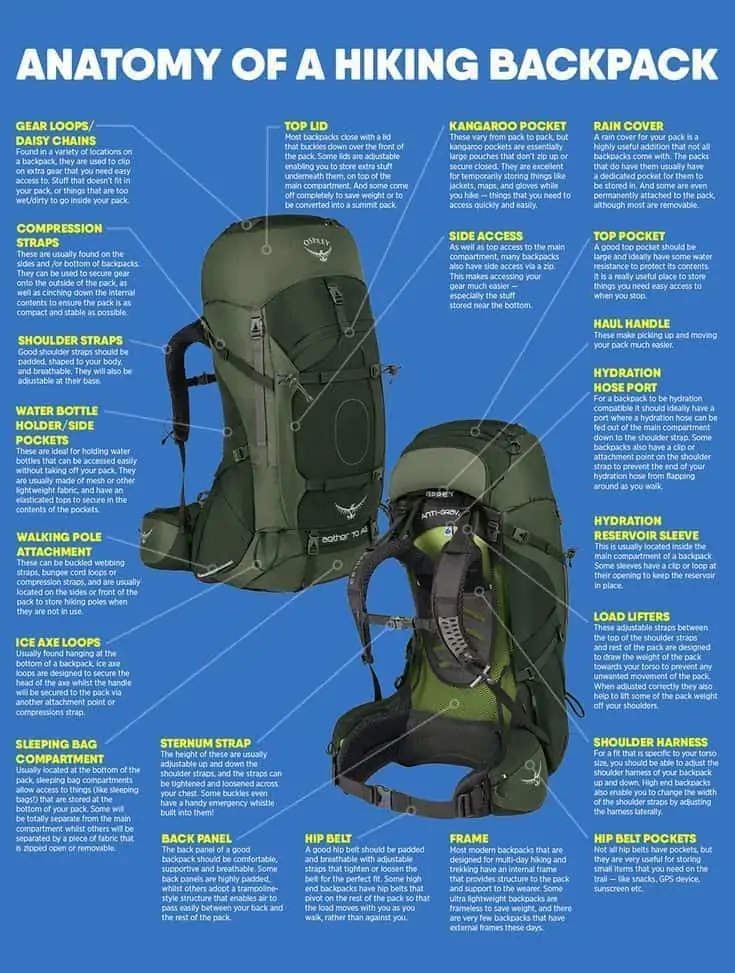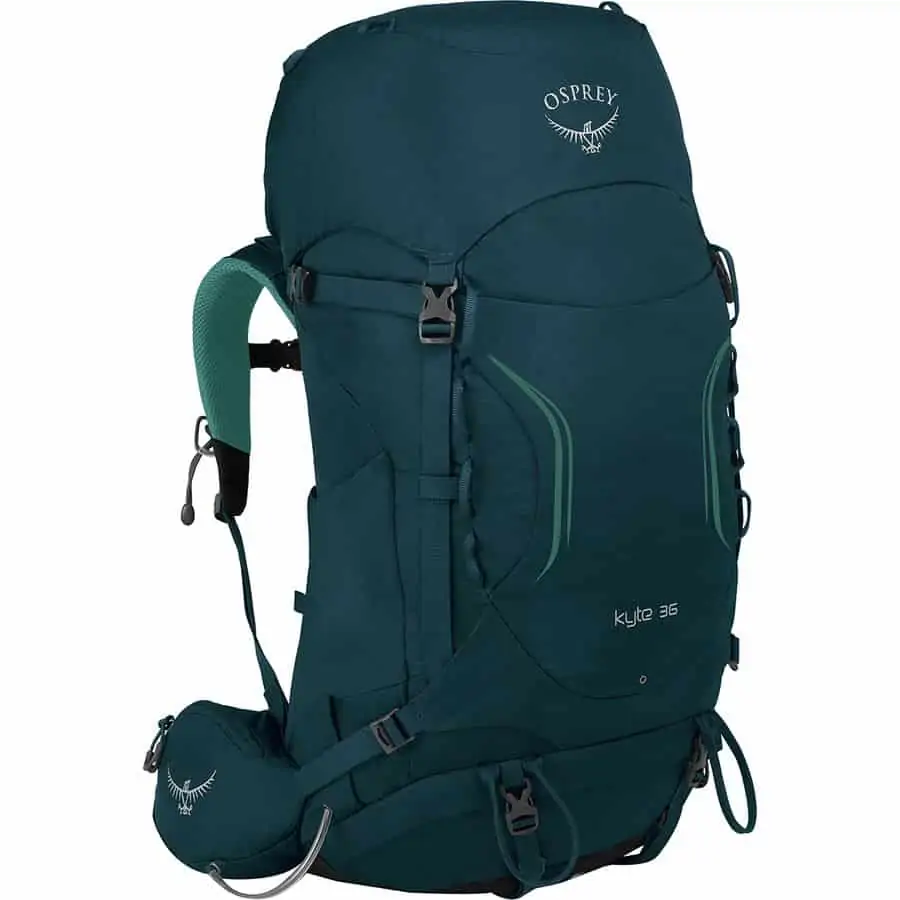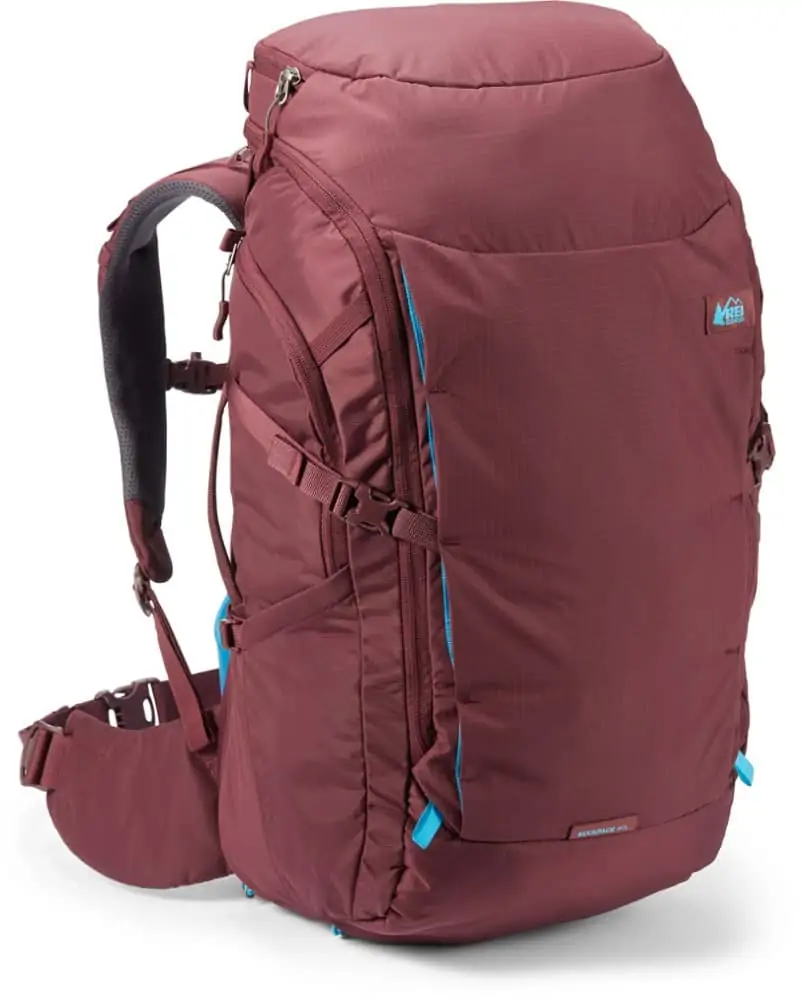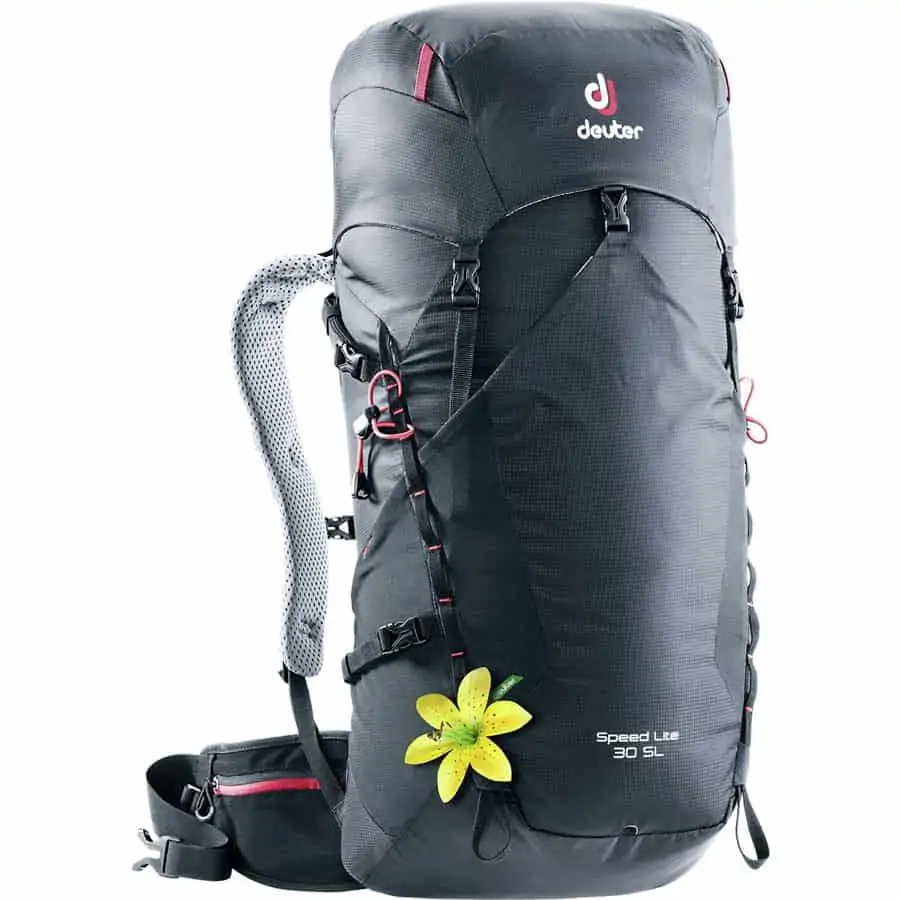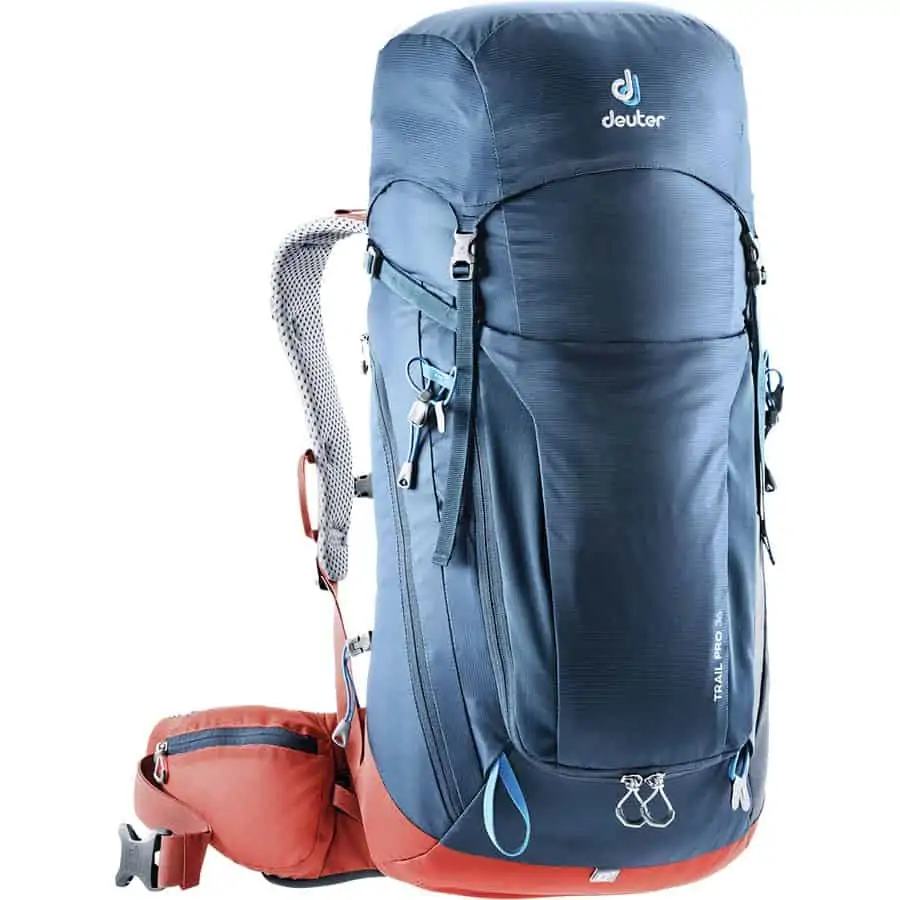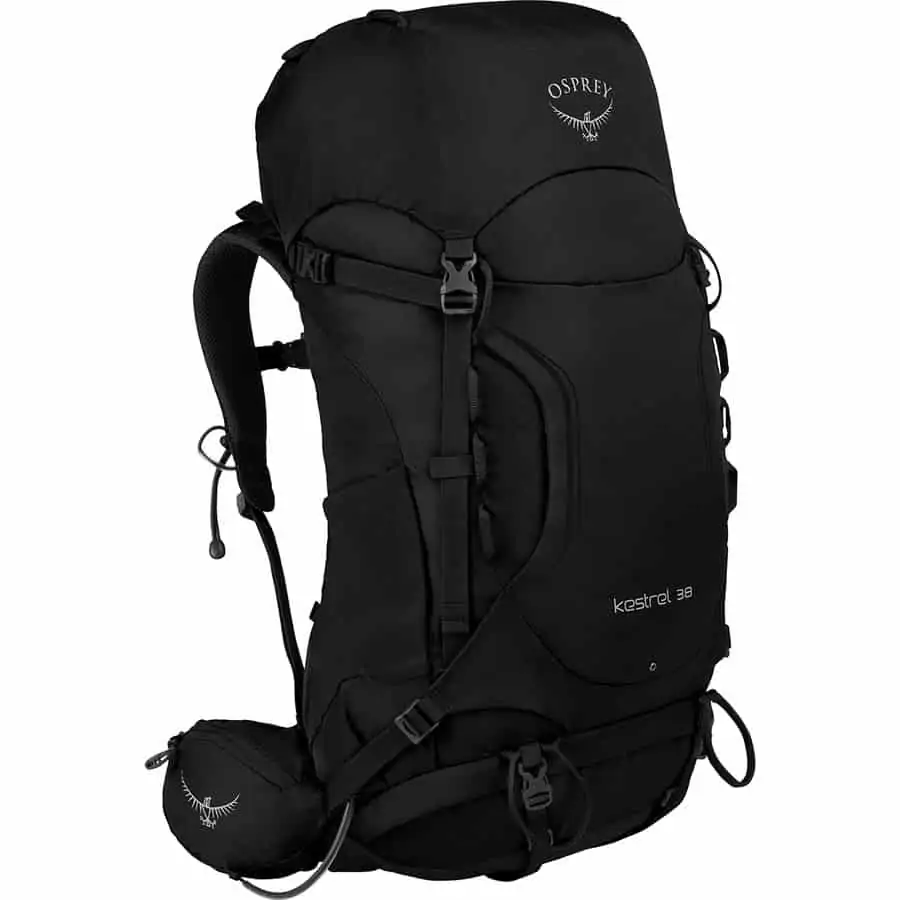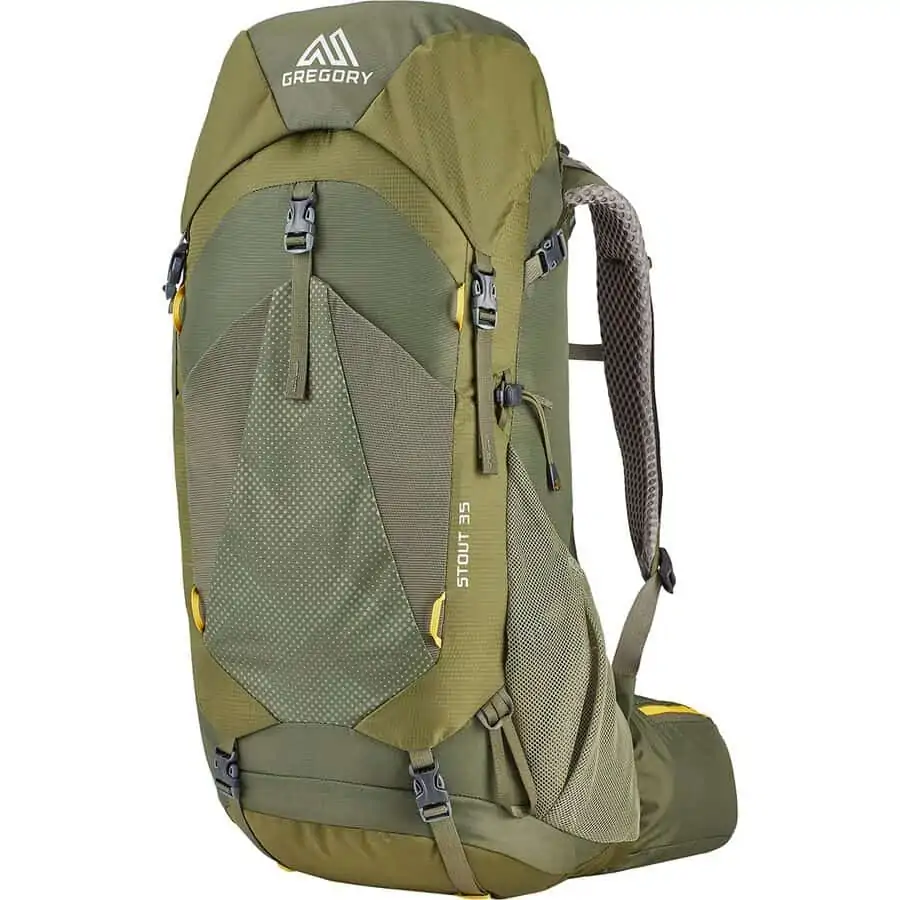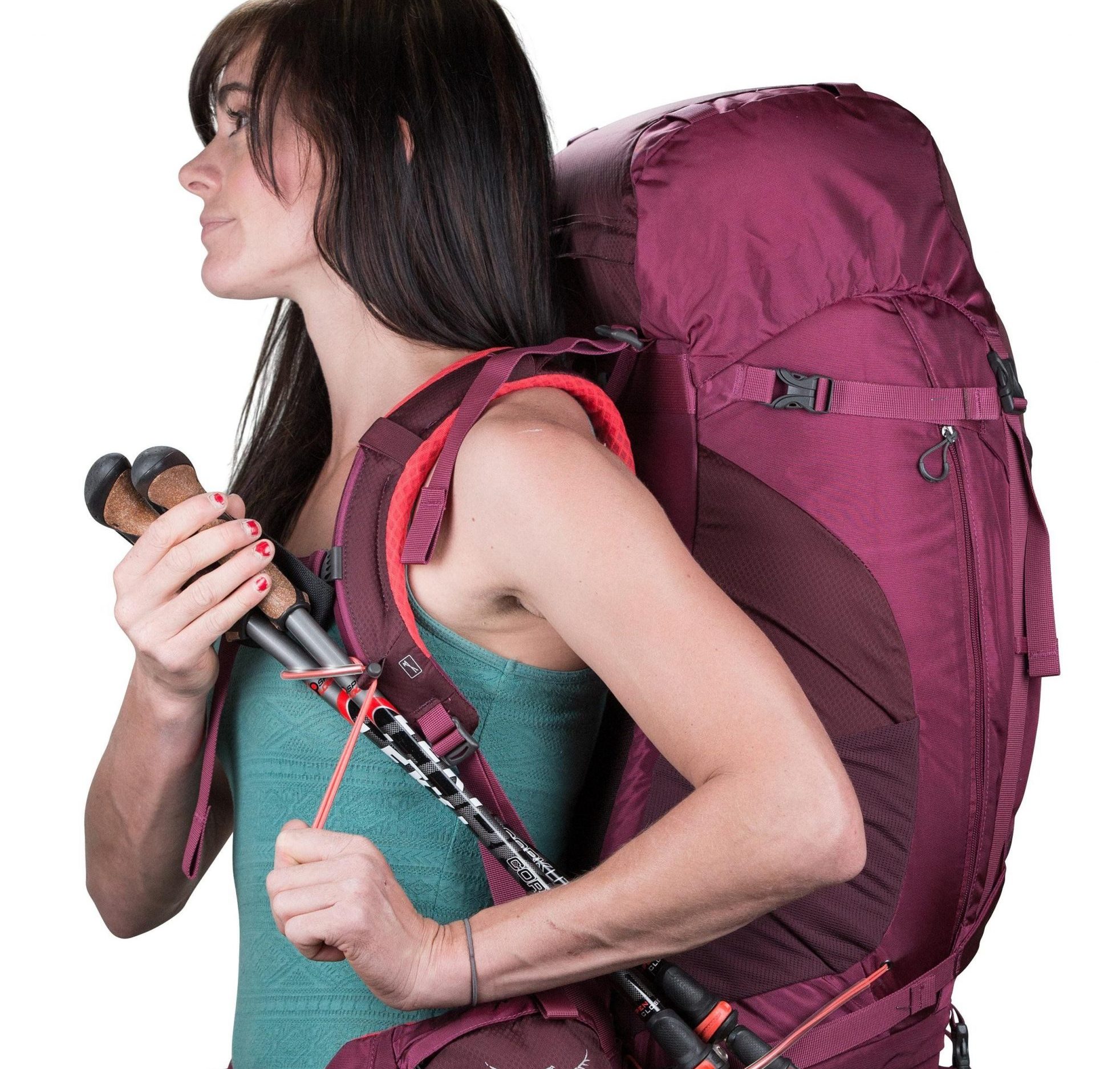 A capable backpack is required for climbing Kilimanjaro.
A capable backpack is required for climbing Kilimanjaro.
Your backpack will hold all of your daily necessities. You’ll get to know it very well since it’ll be with you everyday on your hikes. Inside, you will want extra clothing layers that you’ll put on and take off during your trek such as a fleece jacket, hat, gloves, and waterproof rain gear. Additionally, you will have water, snacks, sunglasses, sunscreen, and perhaps a camera. To get all of this gear into a pack, I suggest a 30-40-liter capacity daypack and nothing smaller.
Many companies now make gender-specific packs. I highly recommend these, as they have features designed for different body shapes and characteristics. Make sure you know your torso length so you can shop for the right-sized pack.

Women’s daypacks have smaller torso lengths and narrower shoulder straps and hip belts. Men’s packs will have longer torso lengths and wider hip belts and shoulder straps, and tend to be larger overall.
I personally like a daypack that has a hydration reservoir (the water bladder is purchased separately), as you will be able to drink without stopping to take out a water bottle. As a result, you’ll drink more water each day and drink more regularly, both of which are key to staying hydrated and healthy during the long trekking days.
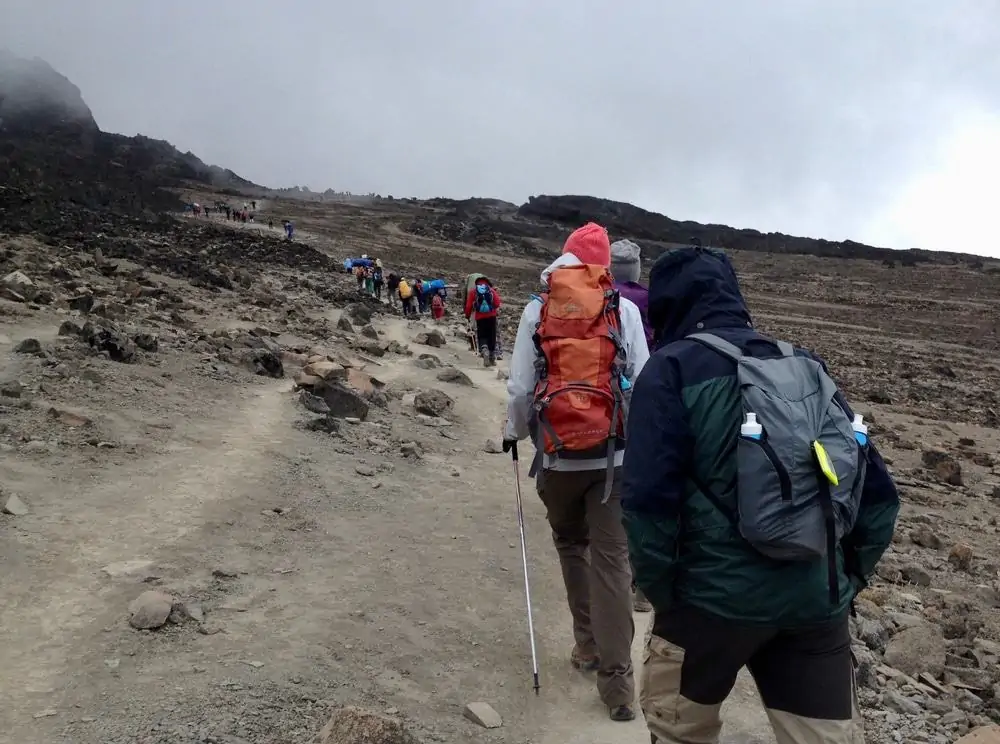
Other specifics you’ll want to consider in a daypack are:
Does the pack include a raincover? Some packs have built in waterproof covers that extend over the top and back of the pack to shed rain. This eliminates the need to buy and carry a separate backpack cover, which often gets lost in the pack or left behind somewhere.
How many external compartments do you want? More pockets mean more places to organize your gear. This is great for grabbing things while on the go without having to unzip the main compartment. Hip belt pockets are especially convenient. I think having exterior pockets makes it far easier to function when your tired or not as clear minded as usual while at high altitude.
Is access to the main area from the top or side? Typical backpacks have a lid that snaps shut and a drawstring that closes the main compartment. Some backpacks have zippers where you can open the pack from the sides. Having more options for access means you don’t have to take things out to dig out an item you need that’s at the bottom.
This great graphic from Cool of the Wild explains the functions of particular parts of a backpack.
The absolute most important thing in a backpack is that it is comfortable for your body. An ill- fitting pack can cause abrasions and blistering, unnecessary aches and pains, disrupt your gait, and cause structural imbalances. Between the frame height, waist belt, shoulder straps, load lifters and chest strap, there are many micro-adjustments you can make so the load sits perfectly against your body. So, if you an unfamiliar with how to size and adjust a pack, I strongly encourage you to go to REI or your local outdoor store. Try-on several packs and have the salesperson show you what modifications to make for the perfect fit.
While you are trying on a pack, get a feel for the overall comfort, weight distribution, where the external pockets are, the opening and closing mechanisms, and other features. Then be sure to test your new pack on a few dayhikes while carrying the gear you plan to have on your Kilimanjaro trek. Figure out what works and what doesn’t and make changes if you need to.
My Recommended Women’s Daypacks
Osprey Kyte 36. The Kyte 36 is a great durable daypack that comes in two sizes: S/M (fitting torso lengths from 16 – 20 inches) and XS/S (fitting torso lengths from 13 – 17 inches). The Kyte has a ventilated back panel, hydration reservoir pocket, sternum strap, raincover, and small pockets on the hip belt to hold snacks or a small camera. This is the daypack I used on Kilimanjaro and Tour du Mont Blanc. I love the hip belt pockets and stretchy mesh side pockets.
REI Co-op Ruckpack 40. This daypack only comes in one size, fitting torso lengths of 16 – 18 inches, so likely not the best option for those with shorter torsos. However, this is a great daypack, with a ventilated back panel, hydration reservoir pocket, and sternum strap.
Deuter Trail Pro 30 SL. This daypack has a cooling back panel, hip belt pockets, sternum straps, hydration reservoir, and good organization in the main pack area. While the Trail Pro has a narrower fit, it only comes in one size to fit torso lengths of 14 – 18 inches. Deuter packs have a reputation for being durable. And like all Deuter women’s packs, this comes with the Deuter flower – a yellow alpine lily – which has a handy hair elastic attached to it.
My Recommended Men’s Daypacks
Deuter Trail Pro 36. The men’s Trail Pro is similar to the women’s, with a detachable raincover, hip belt pockets, chest strap, and is hydration compatible. This comes in one size, fitting torso lengths of 15 – 19 inches. Unlike the women’s Trail Pro, the men’s version does not come with the Deuter flower.
Osprey Kestrel 38. The Kestrel is basically the men’s version of the women’s Osprey Kyte and is a workhorse of a daypack, with a ventilated back panel, hip belt pockets, sternum strap, side and front mesh pockets, and a raincover. It comes in two sizes: M/L (fitting torso sizes of 19 – 23 inches) and S/M (fitting torso sizes of 16 – 20 inches).
Gregory Stout 35L. The Gregory Stout is a technical backpack with an integrated rain cover, hydration sleeve, ventilated back panel, hip belt pockets, sternum strap, and side and front mesh pockets. It comes in one size with an adjustable torso to fit torso sizes of 16 – 21 inches.


